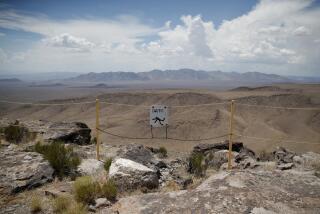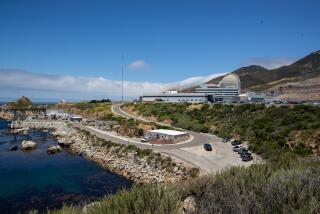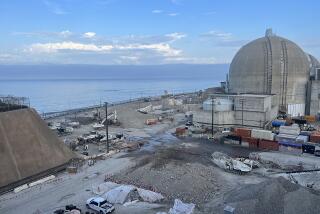Senate OKs Plan for Single Nuclear Waste Dump
WASHINGTON — A major overhaul of the nation’s long-term program for dumping the highly radioactive wastes produced by nuclear power plants was approved Wednesday by the Senate.
The measure, part of a $15.9-billion energy and water development bill that the Senate approved 86 to 9, would scrap a 1982 compromise that called for building two permanent nuclear waste repositories, one in the West and one in the East.
Instead, it would restructure the waste disposal system around a single repository, probably in Nevada, to be completed shortly after the turn of the century.
The appropriations measure, sent to a House-Senate conference committee, includes $7.5 billion for the Energy Department’s nuclear weapons production system, but it calls for the continued shutdown of the controversial N Reactor at the Hanford nuclear reservation in Washington.
The N Reactor, similar in design to the ill-fated Chernobyl plant in the Soviet Union, is one of three aging U.S. plants used to manufacture plutonium, a component of nuclear warheads.
The Energy Department wanted to restart the facility, which was closed for refueling and $55-million worth of safety improvements early this year, but the Senate, by cutting off future funds, effectively agreed with critics who say the plant remains unsafe.
Serious safety concerns also have been raised about the other two production reactors, at Savannah River, Ga., which produce plutonium and tritium, another key warhead component.
The bill’s nuclear-waste provisions were engineered by Sen. J. Bennett Johnston (D-La.).
Eastern Search Would End
Under the 1982 law, the Energy Department developed a long list of possible repository sites in the East, while narrowing the choice in the West to Yucca Mountain, Nev., the Hanford reservation and Deaf Smith County, Tex. The western sites were to undergo expensive exploratory work before a selection was made.
But Johnston’s plan calls for virtually abandoning the search in the East and would require the department to choose just one of the Western sites, by Jan. 1, 1989, for final exploratory work. If that site proves suitable, he argued, construction could proceed immediately, and the nation would save the $4 billion that tests at the other two locations would have cost.
Technical provisions of the measure would appear to make Yucca Mountain the likeliest choice for the final tests, although the decision would be left to the Energy Department.
The measure authorizes also the construction of an above-ground facility known as an MRS--for monitored retrievable storage--for cooling and packaging the nuclear wastes destined for the repository.
The Energy Department has proposed Oak Ridge, Tenn., for the $3-billion MRS, but Tennessee’s delegation managed to insert language in the bill that would delay the final choice until a congressional commission reviews the issue.
The United States already has more than 40,000 metric tons of high-level nuclear wastes, virtually all of it stored in pools near the reactors that produce it.
More to Read
Sign up for Essential California
The most important California stories and recommendations in your inbox every morning.
You may occasionally receive promotional content from the Los Angeles Times.










